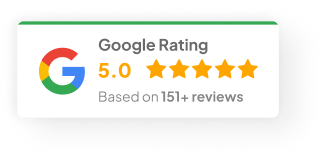21 Jan 25
What Does A B2C Website Use To Track The Items You Select On The Website?
Ever feel like online stores know you just a little too well? Like, you leave something sitting in your cart for a few days and suddenly — bam — there’s a discount offer waiting. Or maybe you’re scrolling and see recommendations eerily close to what you were just thinking about.
That’s not magic. That’s data. And trust me, it’s no accident.
Over the years, I’ve worked with enough eCommerce brands to know how the engine behind this works. It’s a mix of tracking tools, smart algorithms, and frankly, a bit of digital psychology. Let me break it down for you.
What Actually Is B2C Tracking?
Let’s not overcomplicate it. B2C tracking is simply how online businesses watch, record, and learn from what you do on their site.
-
You click something? Logged.
-
You hover over a product? Noted.
-
You add an item to your cart and ditch it? That’s gold.
Every action helps paint a picture of what you like, what you don’t, and how likely you are to buy. The more data they collect, the sharper that picture gets. Eventually, the website isn’t just showing you products — it’s curating a shopping experience built around you.
Honestly, when it’s done well, you barely notice. When it’s done badly? You feel like you’re being stalked.
Why Personalisation Matters (and Why Businesses Are Obsessed With It)
Nobody wants to walk into a giant digital warehouse with a million products and no direction. It’s overwhelming.
Instead, imagine logging into an online store and seeing:
-
Stuff you’ve looked at before
-
Items similar to what you like
-
A few gentle nudges on things you might want soon
That’s what B2C sites are aiming for. They want it to feel like a personal shopper is guiding you.
And businesses aren’t just doing this for your benefit. The numbers don’t lie:
-
Higher conversion rates
-
Lower cart abandonment
-
Stronger customer loyalty
-
More repeat sales
I saw one client (mid-size fashion retailer, 2023) increase their average order value by 18% just by tightening up their recommendation engine. Nothing else. No fancy sales. Just smarter personalisation.
The Main Ways They Track You
Now, how exactly are they collecting all this intel? Here’s where it gets technical — but I’ll keep it simple.
1) Clicks & Hovers
Every click is a clue. Even hovering over a product tells the system you might be interested. If you hover over a pair of sneakers five times but never buy — that data goes into the system for future nudges.
2) Cookies & Session Data
Old-school but still effective. Cookies store what you’ve browsed, added to cart, or even searched for. That’s how your cart magically stays full even if you return days later.
3) Machine Learning & AI
This is where things get clever. AI looks for patterns across your behaviour. Let’s say you always buy skincare on Mondays. The AI will start pushing skincare promos to you Monday morning. Over time, it keeps refining its predictions.
4) Behavioural Analytics Tools
Tools like Google Analytics, Hotjar, or Mixpanel track things like:
-
How long you stay on a product page
-
If you scroll all the way down
-
Where you drop off in the checkout flow
I once worked with a brand using Hotjar heatmaps — we found users weren’t seeing the “Add to Cart” button because it sat too low on mobile screens. Small fix. Big revenue bump.
How That Data Turns Into Product Suggestions
Gathering data is one thing. Knowing what to do with it is the real skill.
1) Recommendation Engines
This is your “You might also like…” section. Based on what you’ve browsed, the system serves up similar items. Looked at hiking boots? You’ll get suggestions for waterproof jackets, trail socks, maybe even a thermos.
2) Collaborative Filtering
Basically: “people like you also bought…” If other customers with similar behaviour bought a certain item, odds are you’ll want it too. Amazon practically built its empire on this.
3) Content-Based Filtering
This one focuses on product traits. If you keep browsing black leather handbags under $200, the system shows you other bags that fit that profile. Simple but effective.
Why This Stuff Isn’t Going Away
Look — personalised shopping works. Customers like it. Businesses love it. The tech keeps getting better.
Gone are the days where websites treated every visitor the same. If you’re running a B2C business and not using some form of behavioural tracking, honestly — you’re leaving money on the table.
Whether you’re using Shopify’s built-in analytics, Klaviyo’s segmentation, or custom-built AI models, the tools are there. You just have to know how to use them.
If you’re running a B2C store right now — what’s one area of your site you think could be smarter with personalisation?


